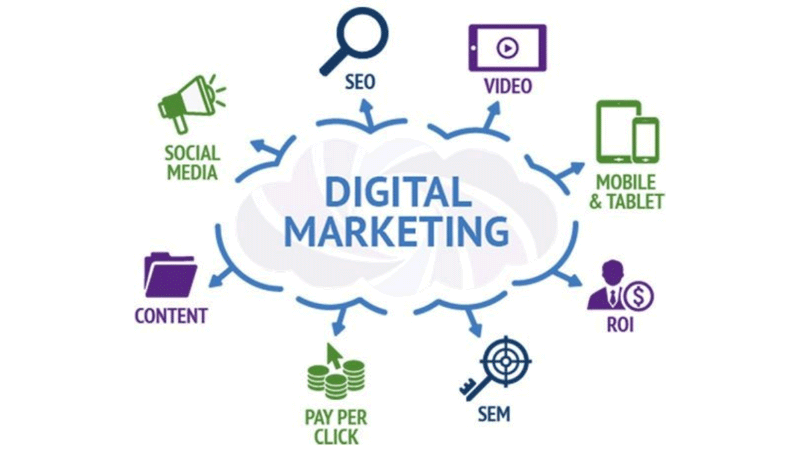Enhance Customer Experience and Drive Website Traffic With Receptive Web Design
In today's electronic landscape, where customers are accessing websites from a wide variety of devices, responsive web layout has become more vital than ever. With its capability to adapt and flawlessly get used to various display sizes, receptive style not only boosts customer experience however likewise drives traffic to your website. Why is this style technique so crucial? Exactly how does it enhance user involvement and rise website web traffic? In this conversation, we will check out the vital aspects of reliable responsive layout, look into the very best practices for its execution, and discover the secrets to enhancing user experience while driving even more website traffic to your internet site.
Why Receptive Website Design Matters
Responsive web layout is a necessary aspect of contemporary web development due to its capacity to ensure optimal individual experience throughout numerous devices and display dimensions. With the spreading of smartphones, tablets, and other smart phones, it has come to be vital for websites to adjust and supply seamless functionality despite the gadget being made use of.
The primary reason why receptive web layout matters is that it allows users to have a consistent and pleasurable searching experience, no matter the gadget they are utilizing. A responsive website instantly adjusts its design, design, and web content aspects to fit the screen dimension and resolution of the gadget, guaranteeing that individuals can conveniently connect and navigate with the web site without any type of aggravation or frustration.
Moreover, responsive web layout additionally plays a significant role in search engine optimization (SEO) Search engines, such as Google, focus on web sites that are responsive and mobile-friendly in their search engine result. By including responsive design principles, sites can enhance their presence and ranking, resulting in boosted organic traffic and prospective clients.

Boosting Customer Interaction Via Responsive Design
Enhancing user interaction is a key goal of receptive design, as it ensures that users can quickly gain access to and engage with web site web content on any gadget. With the enhancing use tablet computers and smart devices, it is essential for websites to adjust to various display sizes and resolutions. Responsive style makes it possible for internet sites to instantly readjust their format and material to give a seamless user experience across devices.
One of the major ways receptive style boosts customer engagement is by reducing tons times. With a receptive site, customers don't have to wait on different mobile variations to lots, causing much faster access to web content. This better rate brings about greater customer fulfillment and urges them to invest even more time on the website.
Furthermore, responsive layout improves user involvement by boosting navigation and interface (The Ad Firm digital marketing). When an internet site is made responsively, buttons and menus are optimized for touch communications, making it less complicated for users to communicate and navigate with the site on their mobile devices. This straightforward and instinctive experience keeps users engaged and encourages them to explore more of the internet site
Moreover, responsive layout allows for better content presence and readability. By adjusting the format and font dimensions to various devices, receptive web sites ensure that customers can conveniently recognize the material and check out. This enhances customer engagement by lowering the requirement for scrolling or zooming to read the message.
Enhancing Internet Site Traffic With Responsive Web Layout
With the expanding popularity of mobile tools, having a site that is responsive to various display sizes and resolutions is crucial for driving enhanced website traffic. In today's digital landscape, individuals are accessing internet sites from a selection of gadgets such as mobile phones, tablet computers, and desktop. Each of these devices has different display dimensions and resolutions, and if your internet site is not created to adjust to these variations, it can result in a bad individual experience and a loss of prospective traffic.
Responsive website design ensures that your website looks and functions ideally throughout all gadgets. By utilizing adaptable grids, liquid pictures, and media questions, receptive style allows your website to automatically change its layout, web content, and navigating to fit any kind of screen size. This implies that individuals will have a seamless browsing experience no matter of whether they are making use of a small smartphone or a big desktop computer computer system.
Crucial Element of Efficient Receptive Design
Reliable responsive style incorporates a number of key components that make certain a seamless individual experience across different gadgets. This permits content to be shown in a visually attractive and understandable manner on any kind of device.
Another important component is media questions. These enable developers to apply different styles and formats based upon the characteristics of the customer's device, such as screen size and positioning. By making use of media questions, developers can maximize the presentation of web content for every tool, making certain that it is legible and conveniently accessible.
Responsive pictures are additionally vital in efficient receptive style. Pictures that are also big can reduce down page load times on smart phones, while pictures that are too little may appear pixelated on bigger displays. By utilizing strategies such as receptive image resizing and careless loading, designers can make certain that images are properly sized and enhanced for each device.
Last but not least, reliable receptive design involves a mobile-first strategy. This implies designing and focusing on content for mobile devices first, and then expanding and enhancing the design for larger screens. This strategy makes certain that one of the most crucial material is easily accessible on smaller sized displays, while still offering a rich experience on bigger tools.
Ideal Practices for Carrying Out Responsive Web Style
Executing receptive website design calls for mindful factor to consider of numerous finest practices to make sure an ideal customer experience throughout different tools. Right here are some essential finest techniques to follow when carrying out receptive website have a peek at this site design.
First of all, it is essential to prioritize mobile users. With the increasing supremacy of smart phones, creating for mobile-first has actually ended up being crucial. Start deliberately for smaller screens and then considerably enhance the design for larger screens.

One more essential finest practice is to enhance pictures for different screen resolutions. Big images can decrease the filling time of your site, especially on mobile phones with slower links. Use receptive photos that can be resized based on the gadget's screen resolution to enhance performance.
Additionally, examination your web site on various devices and display sizes to make sure a constant and smooth experience. There are numerous testing devices available that can help you recognize any problems and make needed modifications.
Last but not least, prioritize usability and access. Ensure that your site is easy to browse, the original source with clear and succinct web content. Ensure that your site is accessible to people with impairments and adheres to accessibility guidelines.
Conclusion
In verdict, receptive web design plays a crucial duty in enhancing customer experience and driving website traffic to web sites. By embracing responsive style principles, web sites can ensure optimum viewing experiences across various tools, leading to enhanced user involvement.
Enhancing individual engagement is a key goal of receptive layout, as it ensures that individuals can conveniently accessibility and communicate with internet site material on any type of gadget. Receptive layout makes it possible for web sites to immediately change their design and web content to give a smooth user experience throughout devices.
Additionally, receptive design improves user interaction by improving navigating and individual my response interface.Receptive images are also vital in reliable responsive design. By taking on receptive layout principles, sites can make certain optimal viewing experiences throughout various tools, leading to raised customer interaction.